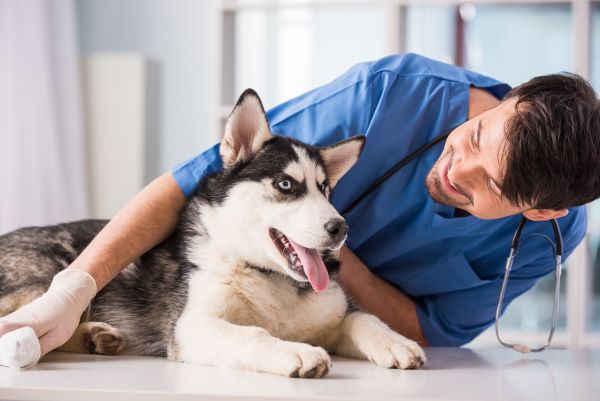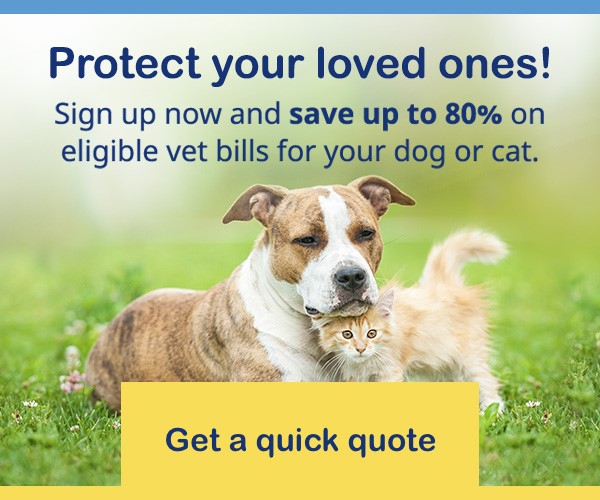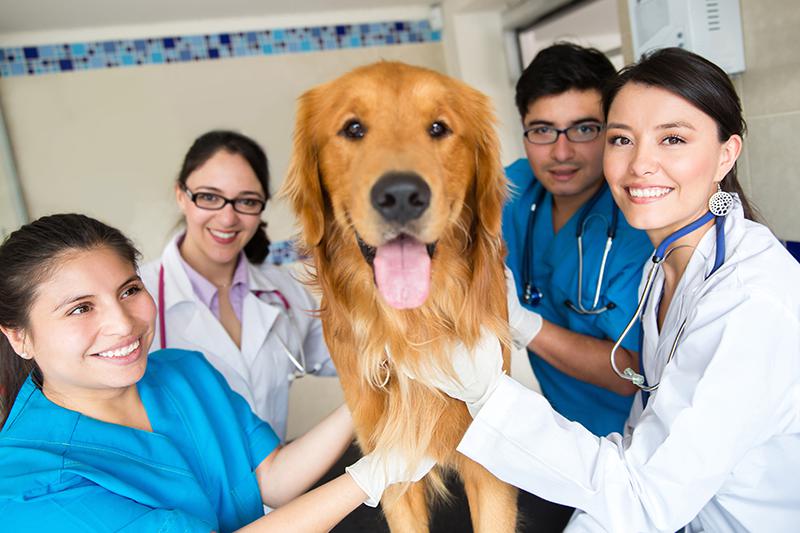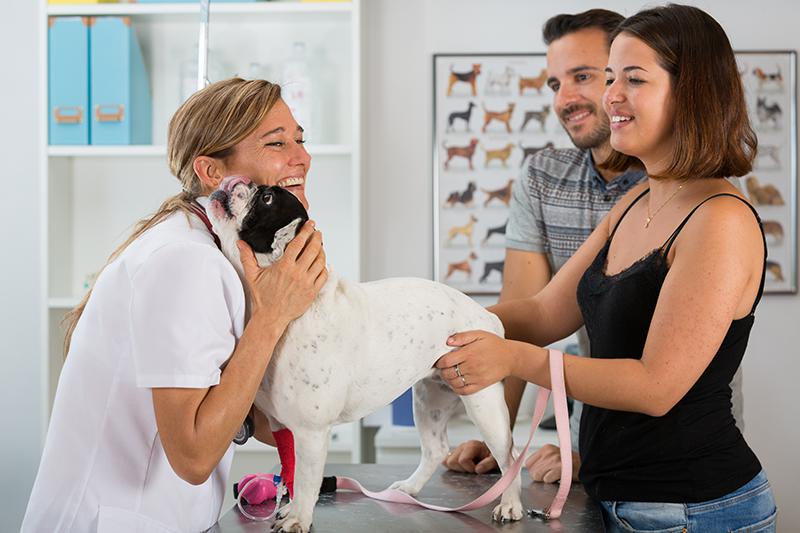Is Pet Insurance worth it?
Many pet owners deliberate whether it is worth getting pet insurance. Over the past decade, pet insurance has grown hugely in popularity, but even so, many dog and cat owners find it difficult to decide if they should take out pet insurance for their pet.

When your pet is happy and healthy, it is hard to foresee a time when things might go awry. But speak to any pet owner whose pet has undergone a serious accident or illness and they will often mention the huge financial expense required to get their pet back to good health.
The fact is that vet treatment is getting increasingly expensive and accidents and illnesses occur frequently among pets, especially in the early and later years. We know that most pets visit the vet at least a couple of times a year, and that vet bills for major surgery or illnesses often add up to thousands of dollars.
The cost of vet care
To calculate if pet insurance is worthwhile, it is important to be aware just how much treatment for pet health conditions can cost. Statistics provided by the Australian Veterinary Association show that the amount spent on our pets has ballooned over the last decade as better vet treatment options have become available, and there are no signs of this slowing.
The 2022 Pet Survey Report indicates that Australians spent more than $33 billion on pet products and services in 2022. Veterinary services accounted for 14% of this spend, equating to more than $4.7 billion annually – an increase of more than 80% since the previous survey in 2019. This places veterinary services as the second largest category of on-going expenditure, with pet food in first position.
According to the survey, the proportion of dogs visiting the vet remained steady at 84%, with the annual vet bill increasing from an average of $546 in 2019 to $1,220 in 2022. Around 69% of cats pay a visit to the vet each year, with an annual spend of around $936 in 2022, up from $371 in 2019.
Dog and cat owners who visit the vet are going multiple times a year – averaging 2.1 visits per dog and 1.9 per cat. The most common reasons tended to be check-ups and vaccinations, followed by eye, ear and skin conditions, de-sexing and dentistry.
So, how do you assess if pet insurance is worth it for you? While this is a subjective assessment, there are some facts that could help you weigh it up.
The first thing that can help is to get an understanding of the costs you could incur if your pet becomes ill or injured. Below are tables that illustrate the average and maximum veterinary costs for the most common health conditions for dogs and cats by age category (data from the Pet Health Monitor 2024).
Top 3 health conditions for dogs under 1 year in 2023*:
| Condition | Average treatment cost | Maximum treatment cost |
|---|---|---|
| Gastrointestinal disease | $661 | $25,939 |
| Skin infection / allergy | $346 | $8,414 |
| Ear Infection | $330 | $12,380 |
Top 3 health conditions for dogs aged 1-8 years in 2023*:
| Condition | Average treatment cost | Maximum treatment cost |
|---|---|---|
| Skin infection / allergy | $586 | $20,622 |
| Ear Infection | $399 | $20,654 |
| Gastrointestinal disease | $812 | $26,435 |
Top 3 health conditions for dogs over 8 years in 2023*:
| Condition | Average treatment cost | Maximum treatment cost |
|---|---|---|
| Skin infection / allergy | $601 | $10,596 |
| Arthritis | $682 | $12,387 |
| Cancer / tumours | $1,514 | $37,133 |
Top 3 health conditions for cats under 1 year in 2023*:
| Condition | Average treatment cost | Maximum treatment cost |
|---|---|---|
| Gastrointestinal disease | $530 | $9,963 |
| Eye disease | $294 | $7,823 |
| Skin infection / allergy | $270 | $4,433 |
Top 3 health conditions for cats aged 1-8 years in 2023*:
| Condition | Average treatment cost | Maximum treatment cost |
|---|---|---|
| Gastrointestinal disease | $727 | $27,061 |
| Traumatic injury | $836 | $30,990 |
| Skin infection / allergy | $398 | $9,614 |
Top 3 health conditions for cats over 8 years in 2023*:
| Condition | Average treatment cost | Maximum treatment cost |
|---|---|---|
| Gastrointestinal disease | $854 | $16,019 |
| Arthritis | $631 | $3,686 |
| Urinary tract disease | $1,589 | $16,559 |
*Based on PetSure claims data, 2023 calendar year. Reimbursement for these claims under a pet insurance policy, would be subject to limits, such as annual benefit limits or sub-limits, benefit percentage, applicable waiting periods and any applicable excess. Cover is subject to the policy terms and conditions. You should consider the relevant Product Disclosure Statement or policy wording available from the relevant provider. Please note that values calculated are based on all claims for that condition and medically related conditions in each calendar year.
Average pet insurance costs
When calculating whether pet insurance is worth it for your pet, it is important to understand what the overall costs of pet insurance will be over time, as your pet ages. As an illustration, in 2023 the average cost of treatment for skin infection / allergy in dogs under 1 year was $346, while for dogs over 8 years it was $601. In cats under 1 year, the average cost of treatment for gastrointestinal disease was $530 and for those over 8 years it was $854. (Source: Pet Health Monitor 2024).
There are many factors that affect the price of your pet insurance. We calculate your premium based on several factors. Some are pre-set and don’t vary, e.g. amounts we consider for some internal expenses. Others can affect the premium amount depending on whether we believe it increases or decreases the risk to us. For example, the type of cover and options you have selected. We’ll also take into account risk factors associated with you and your pet such as your pet’s breed and age. For instance, as your pet gets older the risk of your pet requiring treatment will increase and so the premium increases.
 There are also commercial factors that affect your premium, including costs associated with operating our business and our commercial arrangements. Your premium calculation may also include discounts or promotional offers that we provide. If you qualify for two or more discounts, we apply a specific order to our calculation of your final premium. Also, any discounts and/or your premium may be rounded up or down and some may only apply in the first year of coverage.
There are also commercial factors that affect your premium, including costs associated with operating our business and our commercial arrangements. Your premium calculation may also include discounts or promotional offers that we provide. If you qualify for two or more discounts, we apply a specific order to our calculation of your final premium. Also, any discounts and/or your premium may be rounded up or down and some may only apply in the first year of coverage.
To get an accurate idea of the cost of pet insurance for your pet’s particular breed and age, we recommend that you take a minute to get a pet insurance quote.
Special: Get your first 2 months free* with promo 2MFREE
Pros and cons of pet insurance
As you can see from the veterinary costs for the top 3 health conditions affecting dogs and cats shown in the tables above, pet insurance claims can vary quite substantially depending on the type of accident or illness and its severity.
A starting point when considering whether pet insurance is worth it would be to ask yourself if you could afford bills like these at the time they arise, and if not, what would you do?
Pet insurance can help reduce the risk of having to pay a huge vet bill in one lump sum.
As with most things in life, there are trade-offs, and pet insurance is no different. To help you weigh up whether pet insurance is worth it for your cat or your dog – and for you as their owner – we have put together a list of the pros and cons of pet insurance to help you make an informed decision. It is important to understand all the relevant factors, and to consider which pet insurance policy is right for your circumstances by reading the Product Disclosure Statement. We hope this information helps you answer the question, “Should I get pet insurance?”
Pros of pet insurance
- Less out of pocket up-front: A serious injury or illness can leave you many thousands of dollars out of pocket, but having pet insurance can help you with this. With pet insurance, you can better prepare for the cost of eligible vet bills. And with GapOnly® claiming, you only have to pay the gap between your vet bill and your pet insurance benefit for eligible claims, so you won’t have to fork out as much up front.
- It is a form of budgeting: It is often difficult to discipline yourself to put aside money for pet emergencies. Pet insurance can help with the cost of eligible vet bills for unexpected accidents and illnesses.
- Give them the treatment they need and deserve: When your pet is insured, you will be covered for eligible vet treatments to help address their needs.
- Less to worry about: It is highly stressful when something happens to your beloved pet. Wondering how much the vet bill will be or how you are going to afford it does not help. Pet insurance can help alleviate these concerns by covering eligible vet bills so you can focus on what matters and how to help your sick or injured pet get through it.
Simply put, having pet insurance helps you to be the best pet parent you can be. Why? Because it helps you give them the care they deserve, so you can focus more on looking after them when they aren’t well, and less on the cost of their treatment.
Cons of pet insurance
- Pet Insurance does not cover everything: It is simply not feasible for insurers to cover every potential situation that could happen to your dog or cat – this would cause pet insurance premiums to sky rocket and make it inaccessible to the majority of pet owners. Therefore, insurance policies typically have exclusions so that risk can be better managed. For example, most pet insurance policies in Australia do not cover dental work. There are also usually exclusions relating to declared pandemic diseases, voluntary euthanasia, pregnancy, elective or cosmetic procedures and pre-existing conditions (see below).
- You may be required to pay up front: Pet owners may need to wait some time until their claim is settled by their pet insurance company. However, Bow Wow Meow pays out more than 85%-95% of eligible claims within 5-10 working days from receipt of all supporting documentation, which means your rebate should be back in your account soon. We also provide GapOnly® claiming at participating vet clinics, meaning you only have to pay your portion of eligible vet bills and not the full amount up front.
- There is a usually a co-payment and sometimes an excess to pay: Our Nose-to-Tail Cover gives you multiple annual excess options and covers up to 90% of eligible veterinary expenses, depending on which percentage you elect when taking out your policy#. This allows you to have more control over your out-of-pocket costs.
- Some policies have sub-limits for certain conditions: Besides the overall annual policy benefit limit, some policies may also have sub-limits for certain items. Our Nose-to-Tail Cover offers generous cover with no sub-limits, giving you more benefits when you need them the most.
- Limited options if they do not have a policy before they turn 9 years old: Once a pet is over 9 years of age, you are unlikely to find Pet Insurance that will cover them. If you would like to ensure that your pet has Pet Insurance cover in their senior years (over the age of 9 years), you should commence that policy before they reach their 9th birthday and continue to renew your policy in accordance with the applicable terms and conditions.
- Pre-existing conditions are excluded from cover:
- If your pet has had or currently has a condition that requires treatment and you decide to take out pet insurance, that condition will be excluded from cover.
- In addition, if your pet develops or shows any symptoms or signs of a condition that required treatment prior to you taking out Pet Insurance or within the applicable waiting period of your policy, it is also classified as a pre-existing condition. It is therefore important to understand the waiting period implications.
- On the other hand, if you insure your pet from a young age, certain conditions may not be excluded as pre-existing conditions.
- Note that Bow Wow Meow does have an option in our policies which allows you to apply for a pre-existing condition review to remove the pre-existing condition, provided your pet has had continuous cover for 18 months and no signs of that condition have appeared during the 18-month period.
#Policy T&Cs, limits, exclusions and waiting periods apply. Annual excess may apply.
Pet insurance vs. self-funding
We sometimes hear people say that it would make more sense to put a fixed amount away each month as part of a savings plan to pay for unexpected vet bills should they arise. This does seem like a viable way to avoid paying pet insurance premiums, so why not take on the risk oneself? Although well intentioned, this option may not assist with all unexpected vet bills.
For example, let’s assume you decide you are disciplined enough to put away $60 per month in case something happens to your dog ‘Max’. After five months, your fund is worth $300. However, while taking Max out for a walk, he tears his cruciate ligament and the vet advises that the repair will cost $3,800. Now what?* (*This is an example only. Not all conditions and treatment will be covered. Refer to the Product Disclosure Statement for details of Bow Wow Meow Pet Insurance cover.)

Ok, I hear you say, the chances of this happening within the first five months are slim. But, from our claims statistics, we know that if your dog is a puppy, the risk of health issues and particularly accidents, is higher than that of more mature dogs. Puppies are curious and accidents happen frequently.
Let’s look at another scenario. Max has been perfectly happy and nothing has happened over the first three years of his life. You have saved $2,160 over this period plus a little in interest. You are outside chatting to the neighbour and Max is sniffing around outside. Suddenly there is a yelp and Max has sustained two bite wounds; one to the neck and one to his back leg. The vet’s bill totals $1,700 – you think that’s okay, you have over $2,000 in your fund so this is covered! However, the leg wound becomes infected and there is another $500 to pay the following month. Your fund is suddenly back down to zero.^
By this stage you may be feeling a little anxious as there is now little or nothing left in your fund. However, although there are interest charges to consider, you may still be able to borrow money to pay for an operation or a large vet bill if the need arises. The problem is that this still doesn’t mitigate the risk of anything else happening in the near future and it doesn’t exactly offer you peace of mind.
In summary
So, is pet insurance worth it? There have been several surveys conducted amongst pet owners asking how much they would spend to save their pet, if they were ill or injured. The majority answer that they would be willing to spend any amount needed. However, vets tell us that when some pet owners are faced with the treatment options at varying costs, they may choose the least expensive or most affordable treatment, with compromised outcomes.

Nowadays, pets are considered part of the family. Unfortunately, it is common for our furry family members to land up at an emergency clinic or speciality hospital at least once in their lifetime. Only ten to twenty years ago, many of the current veterinary procedures and treatments were not available and many pets were euthanised. With the pace of technology and the resultant advances in veterinary care that we see today, pet owners are now able to provide their pets with highly specialised, quality vet care.
However, the costs of delivering better healthcare to our pets are continuously increasing. The specialisation of veterinary care in the future will provide us with even more options and even better outcomes…. and greater costs.
Pet insurance can assist pet owners with unexpected vet bills. However, you should consider the features of each product available to help you find one that is suitable for you and your pet.
Bow Wow Meow Pet Insurance can help protect you and your pet should an unexpected trip to your vet occur.
- Find out more about our dog insurance options
- Find out more about our cat insurance options
- Get an instant online pet insurance quote








